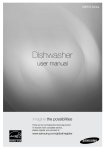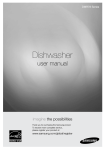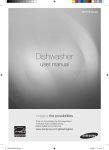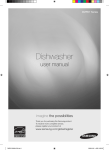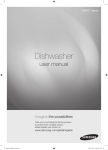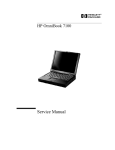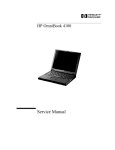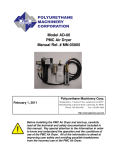Download Samsung DMR77 series Installation guide
Transcript
DMR78 Series DMR77 Series DMR57 Series Dishwasher installation guide These installation instructions are intended for use by qualified installers. STOP If you are having problems installing this dishwasher Please call : 1-800-SAMSUNG (726-7864) for assistance : www.samsung.com imagine the possibilities Thank you for purchasing this Samsung product. To receive more complete service, please register your product at www.samsung.com/global/register safety instructions Throughout this manual, you’ll see Warning and Caution notes. These warnings, cautions, and the important safety instructions that follow do not cover all possible conditions and situations that may occur. It’s your responsibility to use common sense, caution, and care when installing, maintaining, and operating the dishwasher. Samsung is not liable for damages resulting from improper use. Important safety instructions What the icons and signs in this installation guide mean: WARNING Hazards or unsafe practices that may result in severe personal injury or death. CAUTION Hazards or unsafe practices that may result in personal injury or property damage. CAUTION To reduce the risk of fire, explosion, electric shock, or personal injury when using the dishwasher, follow these basic safety precautions: Follow directions explicitly. Make sure the machine is grounded to prevent electric shock. Call the service center for help. These warning signs are here to prevent injury to you and others. Please follow them explicitly. After reading this section, keep it in a safe place for future reference. Read all instructions before using the appliance. Install and store the dishwasher inside, away from exposure to weather. CAUTION Do not install the dishwasher near electrical components. Keep the dishwasher away from open flames. Do NOT install the dishwasher on a carpet as this is a fire hazard. Do NOT install the dishwasher in a location where the water may freeze (where the temperature falls below 32 ˚F (0 ˚C)). Frozen water in the hoses or pipes may damage the dishwasher. As with all any equipment using electricity, water and moving parts, potential hazards exist. To safely operate this appliance, become familiar with its operation and exercise care when using it. The dishwasher must be properly grounded. Never connect it to an ungrounded outlet. Prior to removal of original dishwasher and the installation of your new unit, make sure to switch off your circuit breaker. Do not connect the dishwasher until you have completed the installation. Connecting the power cable is the last step when installing the dishwasher. All wiring and grounding must be done in accordance with the electrical code applicable to the region. _ safety instructions GROUNDING INSTRUCTIONS For a permanently connected appliance: This appliance must be connected to grounded metal, a permanent wiring system, or an equipment-grounding conductor must be run with the circuit conductors and connected to the equipment-grounding terminal or lead on the appliance. The dishwasher is very heavy. Do not attempt to move or carry a dishwasher alone. Two or more people are needed to move a dishwasher and avoid potential injuries. CAUTION If the power cable is damaged, it must be replaced by the manufacturer, a service agent or similarly qualified person in order to avoid a hazard. Do not touch the power cable with wet hands. CAUTION Do not connect another appliance to the same power outlet as the dishwasher. CAUTION Make sure to use a new water supply line. Old lines are susceptible to breakage because they become hardened and may cause property damage due to a water leakage. If the temperature of the water supplied to the dishwasher is higher than 149 ˚F (65 ˚C), control the heater so that it drops below 149 ˚F (65 ˚C). If it does not drop below 149 ˚F (65 ˚C), connect the water supply line to a cold water supply. Ensure that the water supplied to the dishwasher does not freeze. Frozen water can damage the hoses, valves, pump, or other components. Certified residential dishwashers are not intended for licensed food establishments. (NSF/ANSI Standard 184 for Residential Dishwashers) For a full list of safety information, please refer to the User Manual. safety instructions _ contents preparing the dishwasher enclosure 5Product dimensions 5Cutout dimensions installing the dishwasher 6STEP 1 8STEP 2 5 6 specifications 19 _ contents Checking the parts and tools electing the best location for the S dishwasher 9STEP 3 Water supply requirements 10STEP 4 Electrical requirements 11STEP 5 Preparing the dishwasher 12STEP 6 Placing the dishwasher and connecting water supply line 13STEP 7 Leveling the dishwasher 14STEP 8 Securing the dishwasher 15STEP 9 Connecting the drain hose 17STEP 10 Wiring connections 18STEP 11 Completing the installation preparing the dishwasher enclosure Product dimensions 27” (686 mm) Rear view (DMR78 series DMR77 Series/ DMR57 Series) 33 3/4” (857 mm) 23 7/8” (606 mm) 20 1/2” (520 mm) 24 1/2” (622 mm) Side view (DMR57 series) 24 3/4” (629 mm) 2 1/2” (64 mm) 1 3/4” (44 mm) The water supply line, power cable and drain hose should go through this part. 2” (50 mm) 20 1/2” (520 mm) 24 1/2” (622 mm) Cutout dimensions This dishwasher is designed to be enclosed on top and on both sides by a standard residential kitchen unit. 24” (610 mm) minimum 34 1/8” (867 mm) minimum 24” (610 mm) minimum preparing the dishwasher enclosure _ 01 Preparing the dishwasher Side view (DMR78 series/ DMR77 series) installing the dishwasher Be sure that you or your installer follow these instructions closely so that the new dishwasher works properly and that you’re not at risk of injury when washing dishes. STEP 1 Checking the parts and tools Before starting on the installation, prepare all the necessary tools and parts required to install the dishwasher. This will save installation time and simplify the installation process. Parts required Provided 2 Screws (for the Brackets) 2 Screws (for the side walls) 2 Screws (for the kick plate) Power cable Twist on wire connector Strain relief Electrical tape & Standard duct tape Water supply line 90° Elbow(3/8”) Tube fittings Teflon® tape or sealing compound Hose clamp Air gap Rubber connector Brackets Not provided For the water supply line - Flexible stainless steel braided supply line or Minimum 3/8” O.D. copper tubing with compression fitting. (Plastic tubing is not recommended) A 90° elbow with 3/8” N.P.T. external pipe threads on one end, and sized to fit your water supply line (copper tubing/compression fitting, or braided hose) on the other _ installing the dishwasher Tools required Safety glasses Gloves Flashlight Adjustable wrench Wire stripper Pliers Nipper Tape measure Pencil Phillips screwdriver Flat screwdriver Tubing cutter Cutting knife Hole cutter Level installing the dishwasher _ 02 Installing the dishwasher Electric drill installing the dishwasher New installation If the dishwasher is a new installation, most of the installation work must be done before the dishwasher is moved into place. Replacement If the dishwasher is replacing an old dishwasher, the connections for the dishwasher being replaced must be checked for compatibility with the new dishwasher and replaced as necessary. STEP 2 Selecting the best location for the dishwasher The following criteria are important to ensure the best location for the dishwasher. 1. Select a location with a solid floor that is able to support the weight of the dishwasher. 2. Select a location near a sink with easy access to the water supply, drain, and electrical outlet. For the drain to operate properly, the dishwasher should be installed within 9.8 ft (3 m) of the sink. 3. Select a location that allows you to easily load your dishes into the dishwasher. 4. Select a location with sufficient space for the dishwasher door to open easily and with enough space between the dishwasher and the wall (at least 0.1 in (2 mm)). If the dishwasher is installed in a corner, ensure that there is a clearance of more than 2 in. (50 mm) from the wall. 5. Cut a hole into the side of the wall where the sink is as shown in Figure 1 below. 6. If there is an additional level in the sink cabinet and it is higher than the connections on the dishwasher, make two holes as shown in Figure 1-2. 7. The wall at the back must be free of obstructions. <Figure 1-1> The hole for the water supply line, drain hose and power cables. _ installing the dishwasher <Figure 1-2> STEP 3 Water supply requirements <Figure 2> Power cable Water supply line 5½~7½ in. (140~190 mm) installing the dishwasher _ 02 Installing the dishwasher 1. The dishwasher can be connected to either the hot or the cold water supply. If the temperature of the water supplied to the dishwasher is below 149 ˚F (65 ˚C), connect it to the hot water supply. If it is higher than 149 ˚F (65 ˚C), connect it to the cold water supply. 2. Ensure that the water supply valve is turned off before connecting the water supply line to the dishwasher. 3. Seal the water supply line connections using teflon tape or sealing compound to stop any water leakage. 4. The water supply line should be placed in the channels at the base of the dishwasher as shown in Figure 2. Do not place the dishwasher on the water supply line. 5. The drain hose connected to the dishwasher must be run through the hole in the side wall so it can be connected to the drain outlet of the sink. Ensure that there is nothing on the drain hose and be careful not to tear it during the installation process. installing the dishwasher STEP 4 Electrical requirements The electrical requirements for the dishwasher are as follows: • In the United States, in accordance with the National Electric Code/State and Municipal codes and/or local codes. • In Canada, in accordance with the Canadian Electric Code C22.1-latest edition/Provincial and Municipal codes and/or local codes. 1. The dishwasher must be connected with the correct rated voltage supply marked on the rating plate of the unit. 2. Ensure that the Circuit Breaker connected to the dishwasher is off. 3. The power cable must not extend more than 4 ft (1.2 m) from the side of the dishwasher. 4. Check with a qualified electrician or serviceman if you are unsure whether the dishwasher is properly connected. 5. Do not connect another appliance to the same power outlet as the dishwasher. 6. Before connecting the power cable to the dishwasher, ensure that there are no electrical hazards (which may result in fire, explosion, electric shock, or personal injury). 7. The power cable should go through the channels at the base of the dishwasher as shown in Figure 3. <Figure 3> Power cable Water supply line 10_ installing the dishwasher 2¾~3½ in. (70~90 mm) STEP 5 Preparing the dishwasher <Figure 4> Kick plate <Figure 5> A A B C B C Junction box Strain relief installing the dishwasher _11 02 Installing the dishwasher 1. Ensure that the circuit breaker and water supply valve are turned off before proceeding with the following steps. 2. Ensure that the kick plate is placed on the cushion front, and make sure to keep it. 3. Install the 90˚ elbow at the Inlet valve. When inserting the elbow into the Inlet valve, use Teflon tape or sealing compound to prevent water leakage. To prevent blocking the inlet valve, make sure that the Teflon tape or sealing compound does not enter the valve. 4. Remove the junction box cover located at the bottom right at the front of the dishwasher using a screwdriver and then Install the strain relief. Make sure to keep the junction box cover you removed as it is used in STEP 10. 5. When the countertop is made of wood or a material that is not damaged by drilling, locate the two (2) Installation brackets that were supplied with the dishwasher. (Refer to the figures in STEP 8.) installing the dishwasher STEP 6 Placing the dishwasher and connecting water supply line 1. Adjust the four leveling legs at the bottom of the dishwasher after measuring the height of the cabinet opening from under the countertop to the floor. (Refer to the figures in STEP 7.) 2. Locate the water supply line for connecting the inlet valve on the left and the power cable for connecting the junction box on the right. 3. Place the dishwasher so that the water supply line and the power cable are located in the channels at the base of the dishwasher. Use standard duct tape to secure the water line and electrical cable to their adjacent channels in the base. 4. Pull the drain hose through the hole in the side wall to the sink. 5. Slide the dishwasher carefully into the installation space. 6. Connect the water supply line into the elbow joint. CAUTION Do not place the dishwasher on the water supply line, drain hose or power cable. Also, make sure they are not folded or twisted. <Figure 6> <Figure 7> Drain hose Water supply line Power cable Water supply line 12_ installing the dishwasher Elbow Inlet valve STEP 7 Leveling the dishwasher 1. Open the door and place the level against the top of the tub from inside and check whether the dishwasher is level. If it is not level, rotate the leveling legs at the bottom front of the dishwasher until the dishwasher is level. 02 Installing the dishwasher 2. Check whether the dishwasher is upright (perpendicular), as shown in the figure to the right. 3. Open the door of the dishwasher and check whether both the tub and door clearances are correct. If not, rotate the leveling legs at the bottom front of the dishwasher. If the leveling legs are rotated to the left (counter clockwise), they are loosened and the front of the dishwasher is raised. If they are rotated to the right (clockwise), they are tightened and the front of the dishwasher is lowered. installing the dishwasher _13 installing the dishwasher STEP 8 Securing the dishwasher The dishwasher should be fixed to the countertop or side walls for additional stability and safety. 1. When the countertop is made of wood or the material will not be damaged by drilling, follow the instructions in 2-1 below. When the countertop is made of granite, marble or any other kind of material that can be damaged by drilling, follow the instructions in 2-2 below. 2-1. Check to connect the Installation brackets to the front top of the dishwasher as shown in Figure 8. (If the Brackets are exposed under the countertop, cut them using a tool as shown in Figure 8. Be careful that you are not hurt by the cutting plane.) Attach the dishwasher to the countertop by fastening the screw through the hole. 2-2. Open the door and remove the tub spacer caps on both sides of the tub. Insert the screws into both sides of the tub except for the tub spacer cap and secure the dishwasher to the side walls by fastening them as shown in Figure 9. At this time, fasten the screws and ensure that the tub is not distorted. After fastening the screws, place the tub spacer caps into original location of the dishwasher. • The screws or tub spacer cap may fall into the dishwasher while you are working with the door open. Cover the interior of the dishwasher with a towel to prevent any screws from falling into the dishwasher. If any foreign items such as a screw get into the dishwasher, it may cause noise, an abnormal operation, damage, or a product malfunction. • Use a magnetic screwdriver to help prevent screws from falling into the dishwasher. • If a foreign item such as a screw gets into the dishwasher and you are unable to remove it, it needs to be disassembled. Contact a qualified service technician for this. <Figure 8> Screw to countertop <Figure 9> Tub spacer cap Screw to side wall 14_ installing the dishwasher STEP 9 Connecting the drain hose 1. Check the parts on the sink to which the drain hose is connected. 2. There are several ways to insert the drain hose into the drain hose connector of the sink, as shown in the following figures. Connecting the drain outlet must be done in accordance with the water pipe installation regulations in your region. <Figure 10> Garbage disposal With an air gap Without an air gap Air gap Drain hose Hose clamp Hose clamp Case 2. With disposal Garbage disposal With an air gap Without an air gap Air gap Drain hose Hose clamp Hose clamp installing the dishwasher _15 02 Installing the dishwasher Case 1. Without disposal installing the dishwasher 3. Check the size of the sink’s drain hose connector. If needed, cut the drain hose so its end fits into the sink connector (1/2 in., 3/4 in. or 1 in. - as shown in the Figure below). If the end of the drain hose does not fit into the drain hose connector of the sink, use an adaptor purchasable at a plumbing/hardware supply store. 4. When connecting the drain hose, make sure to fasten it using a hose clamp. Failing to do so may cause water leakage. 5. If there is no air gap, make sure to hang the middle of the drain hose in a high location to prevent backflow (see the figure below). Be careful when cutting off the end of the drain hose as there is a risk of injury. Clean around the sink’s drain connection so that it does not damage the hose. Check for any foreign items in the drain hose and remove them. CAUTION <Figure 11> 1 in. ¾ in. ½ in. (25 mm) (19 mm) (13 mm) If required, cut off the end of the drain hose at one of the dotted lines. <Figure 12> Dishwasher Sink Drain hose Min. 30 in. (762 mm) Min. 20 in. (508 mm) 16_ installing the dishwasher STEP 10 Wiring connections <Figure 13> Black to black Power cable Junction box White to white Green to green (Ground to ground) Strain relief <Figure 14> installing the dishwasher _17 02 Installing the dishwasher 1. Before connecting the power cable to the dishwasher, make sure to turn off the circuit breaker. 2. Check to remove the junction box cover located at the bottom right at the front of the dishwasher. You will find three power wires from the dishwasher including the grounding line. 3. Connect the power cable to the dishwasher. Twist and connect each wire using wire connectors. When using wire connectors, insert each wire as shown in Figure 14 and rotate the wire connector. 4. Recheck whether the power cable is connected correctly. (Each colored wire should be connected to its opposite wire of the same color. White should be connected to white, black to black, and green to green.) 5. Replace the junction box cover on the dishwasher. installing the dishwasher STEP 11 Completing the installation 1. 2. 3. 4. Open the door and remove all foam, paper packaging and unnecessary parts. Turn on the circuit breaker turned off before beginning the installation. Open the water supply valve to supply water to the dishwasher. Turn on the dishwasher, and select and run a cycle. Check whether the power turns on correctly or whether there is any water leakage while the dishwasher is operating. If no errors occur while it is operating, turn off the dishwasher and proceed with the following. If an error has occurred, turn off the dishwasher, close the water supply valve and refer to the user manual or contact a service center 1-800-SAMSUNG (726-7864). CAUTION Make sure to check water leakage from both ends of water supply line and drain hose connector. 5. Check that the kick plate gasket is on the bottom of the kick plate where is placed on the cushion front. To install the kick plate, refer to the figure below. 18_ installing the dishwasher specifications 120 V, 60 Hz AC only Water pressure 20 ~ 120 psi (140 ~ 830 kPa) Dimensions (Width×Depth×Height) 237/8 x 243/4 x 337/8 in. (605 x 627 x 860 mm) Nominal inlet water temperature 120 ˚F (49 ˚C) Specifications are subject to change without notice for quality improvement purposes. The actual appearance of the dishwasher may differ from the illustrations in this manual. specifications _19 03 Specifications Power supply QUESTIONS OR COMMENTS? COUNTRY CALL OR VISIT US ONLINE AT USA 1-800-SAMSUNG (726-7864) www.samsung.com CANADA 1-800-SAMSUNG (726-7864) www.samsung.com/ca/ Code No.: DD68-00027A-01_EN




















